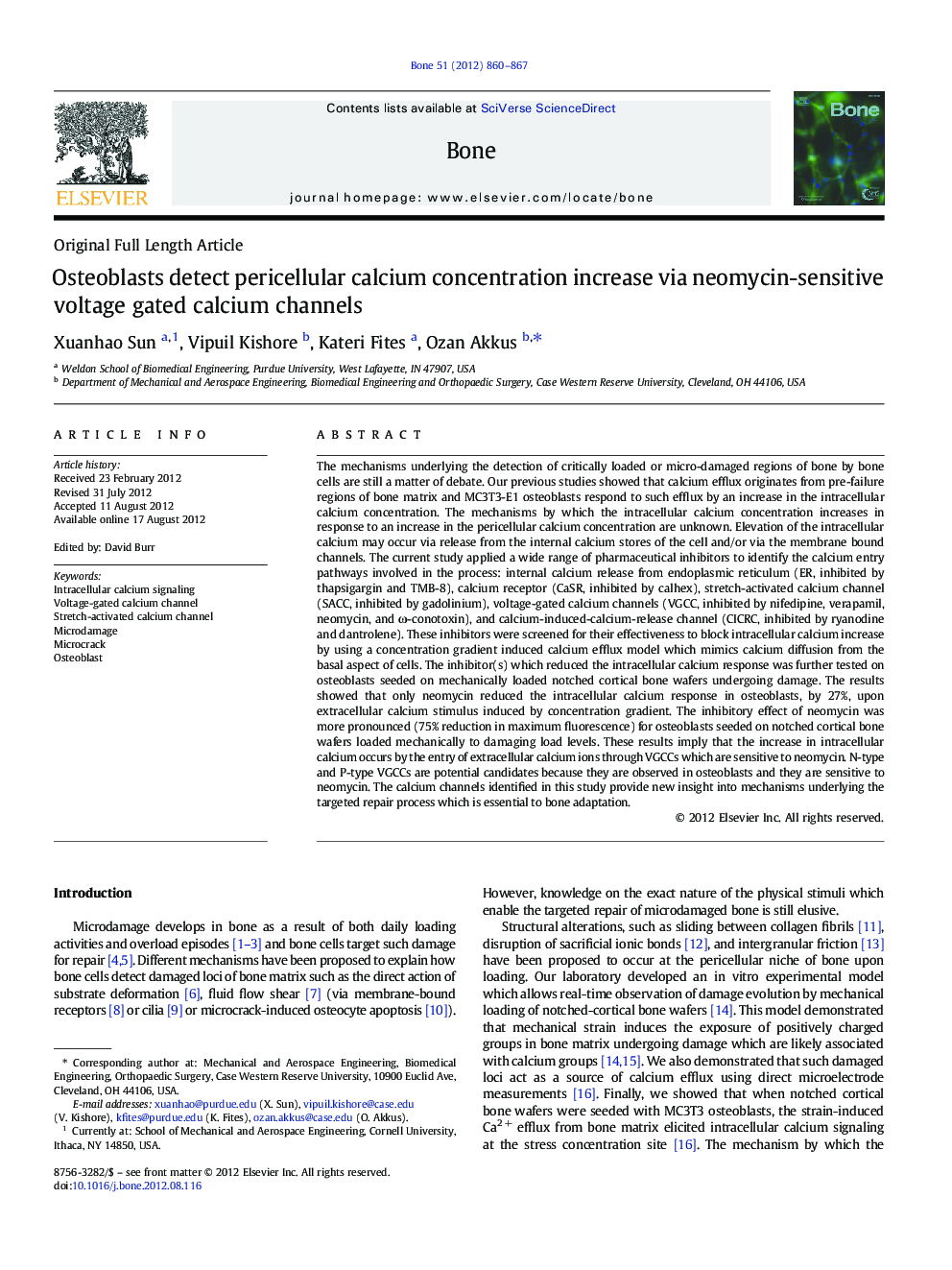| کد مقاله | کد نشریه | سال انتشار | مقاله انگلیسی | نسخه تمام متن |
|---|---|---|---|---|
| 2779367 | 1153270 | 2012 | 8 صفحه PDF | دانلود رایگان |

The mechanisms underlying the detection of critically loaded or micro-damaged regions of bone by bone cells are still a matter of debate. Our previous studies showed that calcium efflux originates from pre-failure regions of bone matrix and MC3T3-E1 osteoblasts respond to such efflux by an increase in the intracellular calcium concentration. The mechanisms by which the intracellular calcium concentration increases in response to an increase in the pericellular calcium concentration are unknown. Elevation of the intracellular calcium may occur via release from the internal calcium stores of the cell and/or via the membrane bound channels. The current study applied a wide range of pharmaceutical inhibitors to identify the calcium entry pathways involved in the process: internal calcium release from endoplasmic reticulum (ER, inhibited by thapsigargin and TMB-8), calcium receptor (CaSR, inhibited by calhex), stretch-activated calcium channel (SACC, inhibited by gadolinium), voltage-gated calcium channels (VGCC, inhibited by nifedipine, verapamil, neomycin, and ω-conotoxin), and calcium-induced-calcium-release channel (CICRC, inhibited by ryanodine and dantrolene). These inhibitors were screened for their effectiveness to block intracellular calcium increase by using a concentration gradient induced calcium efflux model which mimics calcium diffusion from the basal aspect of cells. The inhibitor(s) which reduced the intracellular calcium response was further tested on osteoblasts seeded on mechanically loaded notched cortical bone wafers undergoing damage. The results showed that only neomycin reduced the intracellular calcium response in osteoblasts, by 27%, upon extracellular calcium stimulus induced by concentration gradient. The inhibitory effect of neomycin was more pronounced (75% reduction in maximum fluorescence) for osteoblasts seeded on notched cortical bone wafers loaded mechanically to damaging load levels. These results imply that the increase in intracellular calcium occurs by the entry of extracellular calcium ions through VGCCs which are sensitive to neomycin. N-type and P-type VGCCs are potential candidates because they are observed in osteoblasts and they are sensitive to neomycin. The calcium channels identified in this study provide new insight into mechanisms underlying the targeted repair process which is essential to bone adaptation.
► Increased pericellular Ca2 + level associated with mechanical damage triggers the elevation of intracellular Ca2 + level in MC3T3-E1 osteoblasts.
► Elevation of intracellular Ca2 + level is associated with the entry of extracellular Ca2 + to the cytoplasm.
► Neomycin sensitive voltage-gated calcium channels (VGCC, N-type or P-type) are likely responsible for calcium entry to the cytoplasm.
Journal: Bone - Volume 51, Issue 5, November 2012, Pages 860–867